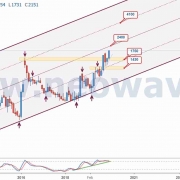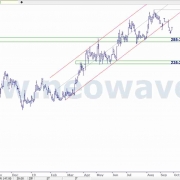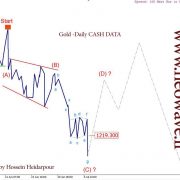(71) New Tips & Hints
While plotting highs/lows, only price is used, but the time difference between them is not. Do you think it is of no use when and at what time highs/lows occurred. And if you think they are useful, please tell us how it can be used to detect the structure of monowaves?
ANSWER:
This question was sent in by Pradeep Mehta of India. I’m surprised this is the first time I have received this question. It brings up an issue that perplexed me the first few years of my career.
During the course of a day (or any time frame viewed on a bar chart), the high and low seen could have happened in the first minute, the last minute, the first hour, the last hour, mid day or thousands of other possibilities. In essence, Pradeep is asking why we plot the high and low of a day (or any time frame) as if they occurred exactly the same time apart.
I wrestled with this idea when I began studying wave theory and assumed plotting the high and low of a day at the exact time they occurred would work better than spacing them at equal distances apart. Keep in mind, when you use bar charts (instead of NEoWave charts) to do wave analysis, you are making a far graver mistake – you are assuming the impossible, that the high and low of a particular day occurred simultaneously!
After years of working with various forms of plotting (bar charts, average of the high and low, close-only, accurate time plotting like that mentioned above and simply plotting the high and low equally distanced apart), I found the last option far superior to the others. It is not clear to me why more accurate time-based plots do not work better, but they don’t, so I gave them up 20 years ago. NEoWave rules and guidelines work best when the highest high and lowest low of any repetitive time frame are plotted in the order they occurred and spaced at equal distance from each other.











دیدگاه خود را ثبت کنید
تمایل دارید در گفتگوها شرکت کنید؟در گفتگو ها شرکت کنید.